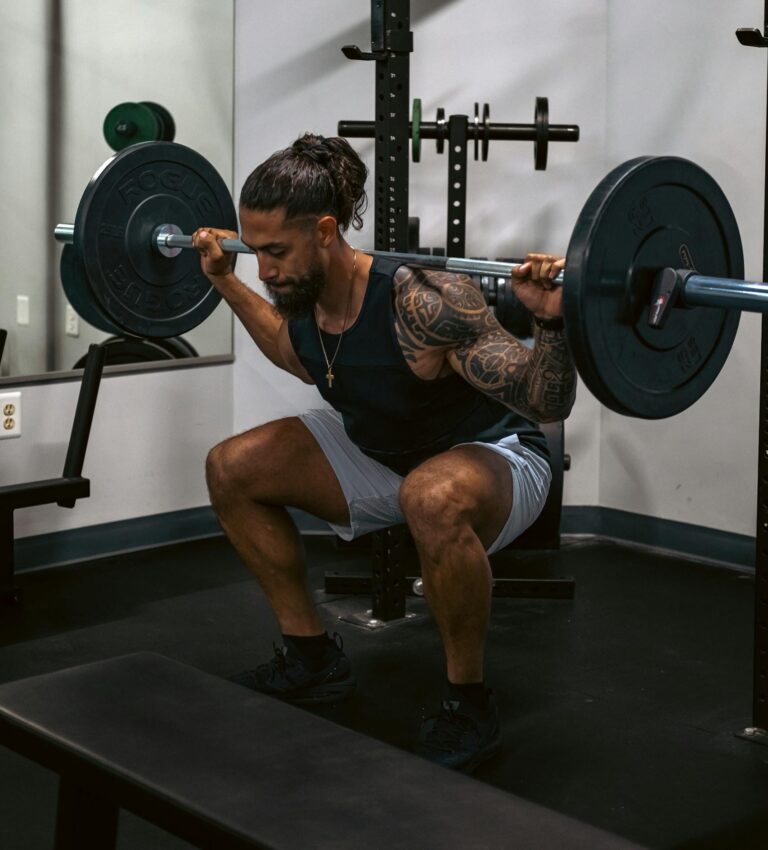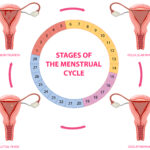FREE SHIPPING OVER $50
Defy Your Age: 4 Simple Strength Workouts to Build Muscle & Stay Strong After 50

Let’s be honest, hitting the big 5-0 (or being well past it) can bring up some concerns about our bodies. Maybe you’ve noticed everyday tasks feel a little heavier, or perhaps you’re simply worried about that dreaded “muscle loss” everyone talks about. The good news? You absolutely can defy your age when it comes to strength and vitality. Getting older doesn’t automatically mean getting weaker. In fact, it’s a prime time to get smarter about your fitness.
The truth is, age-related muscle loss, medically known as sarcopenia, is a real phenomenon. But it’s not an inevitable sentence. The right kind of exercise, specifically strength training, acts as your ultimate defense. It helps you not just maintain, but actually build muscle and stay strong for decades to come. This isn’t about becoming a bodybuilder; it’s about maintaining your independence, energy, and zest for life.
Before You Start: Essential Prep & Safety Tips
Ready to get started? Fantastic! But a quick word on safety and preparation will make your journey smoother and more effective. Always prioritize proper form over lifting heavy weights, especially when you’re starting out.
- Consult Your Doctor: If you have any pre-existing health conditions, injuries, or haven’t been regularly active, a quick chat with your doctor is always a smart first step.
- Warm-Up is Non-Negotiable: Before every workout, spend 5-10 minutes with light cardio (like brisk walking or marching in place) and dynamic stretches (arm circles, leg swings). This prepares your muscles and joints for action.
- Focus on Form, Not Weight: Perfecting your technique is more important than how much weight you lift or how many reps you do. Bad form can lead to injury and won’t effectively build muscle.
- Listen to Your Body: A little muscle soreness is normal; sharp pain is not. If something hurts, stop. Adjust the exercise or take a rest day.
- Progressive Overload (Simply Put): To build muscle and get stronger, you need to challenge your muscles more over time gradually. This could mean doing more repetitions, adding another set, or very gradually increasing the weight or resistance. Don’t jump too quickly!
- Consistency is Key: Showing up regularly is far more effective than sporadic, intense workouts. Aim for 2-3 strength workouts per week with rest days in between.
- Fuel and Hydrate: Support your muscles by eating enough protein (lean meats, fish, eggs, beans, nuts) and drinking plenty of water throughout the day.
Your Blueprint: 4 Simple Strength Workouts to Build Muscle
These 4 simple strength workouts are designed to be accessible and effective for men and women after 50. They focus on compound movements (working multiple muscle groups at once) and functional exercises that mimic real-life activities. You can do many of these with just your body weight, or with light dumbbells or resistance bands.
Aim for 2-3 sets of 10-15 repetitions for each exercise, resting for 60-90 seconds between sets. If 10-15 reps feel too easy, try to increase your reps or the resistance next time.
1. The Bodyweight Foundation Workout
This routine uses only your body weight, making it perfect for beginners or days you don’t have equipment. It builds a solid base of strength and stability.
- Focus: Full-body functional strength, core stability, balance.
- Equipment: None (maybe a sturdy chair or wall for support).
- The Exercises:
- Wall Push-ups: Stand facing a wall, about arm’s length away. Place your hands on the wall slightly wider than shoulder-width apart. Bend your elbows to lower your chest towards the wall, then push back to the start. Why it’s beneficial: Builds upper body pushing strength (chest, shoulders, triceps) safely.
- Chair Squats: Stand in front of a sturdy chair, feet shoulder-width apart. Slowly lower your hips as if to sit on the chair, lightly tap the seat, then push through your heels to stand back up. Keep your chest up and back straight. Why it’s beneficial: Strengthens legs and glutes, mimics sitting and standing, crucial for independence.
- Glute Bridges: Lie on your back with knees bent, feet flat on the floor hip-width apart. Engage your glutes and lift your hips off the floor until your body forms a straight line from shoulders to knees. Lower slowly. Why it’s beneficial: Activates and strengthens glutes and hamstrings, supports lower back health.
- Calf Raises (holding onto support): Stand tall, holding onto a wall or chair for balance. Slowly lift up onto the balls of your feet, squeezing your calves. Lower with control. Why it’s beneficial: Strengthens calf muscles, important for walking efficiency and balance.
2. Dumbbell & Band Basics Workout
Ready to add a little more challenge? This workout incorporates light dumbbells or resistance bands to increase resistance and promote more muscle growth.
- Focus: Targeted muscle development with external resistance.
- Equipment: Light dumbbells (2-10 lbs, or even soup cans/water bottles) or resistance bands.
- The Exercises:
- Dumbbell Bicep Curls: Stand or sit, holding a dumbbell in each hand, palms facing forward. Keep elbows tucked to your sides and curl the weights up towards your shoulders. Lower slowly. Why it’s beneficial: Directly targets your biceps, important for lifting and pulling.
- Dumbbell Overhead Press (seated or standing): Sit or stand with a dumbbell in each hand, palms facing forward, at shoulder height. Press the weights straight overhead until arms are fully extended. Lower with control. Why it’s beneficial: Builds shoulder strength and stability, crucial for overhead tasks.
- Resistance Band Rows (seated or standing): If seated, wrap a resistance band around your feet. If standing, anchor it to a sturdy object. Hold ends of band, pull elbows back, squeezing shoulder blades together. Release slowly. Why it’s beneficial: Strengthens back muscles, improves posture, balances out pushing movements.
- Dumbbell Lunges (or Static Lunges): Stand with feet hip-width apart, holding a dumbbell in each hand. Step one leg forward and lower your back knee towards the floor (or just bend knees in place for static lunge), keeping front knee over ankle. Push back up. Alternate legs. Why it’s beneficial: Excellent for leg strength, glutes, and challenges balance more than squats.
3. Core & Balance Builder Workout
A strong core and good balance are non-negotiable for staying independent and preventing falls as you age. This routine focuses specifically on these vital areas.
- Focus: Core stability, balance, spinal health, fall prevention.
- Equipment: Mat or floor space, sturdy chair for balance.
- The Exercises:
- Plank (on knees or toes): Start on your forearms and knees (easier) or forearms and toes (harder), keeping your body in a straight line from head to heels. Engage your abs and glutes. Hold for 20-60 seconds. Why it’s beneficial: Develops full core strength and endurance, protects your lower back.
- Bird-Dog: Start on all fours (hands under shoulders, knees under hips). Extend one arm straight forward and the opposite leg straight back, keeping your core tight and hips level. Hold briefly, then return. Alternate sides. Why it’s beneficial: Improves core stability, balance, and coordination, fantastic for spinal health.
- Side Plank (on knees or feet): Lie on your side, propped up on one forearm, elbow directly under shoulder. Stack your feet (harder) or place top knee on ground for support (easier). Lift hips until body forms a straight line. Hold for 15-45 seconds per side. Why it’s beneficial: Strengthens oblique muscles (side abs) and improves lateral stability.
- Single-Leg Stands (with support): Stand tall, holding onto a chair or wall for support if needed. Lift one foot off the ground and try to balance for 30-60 seconds. Repeat on the other leg. Why it’s beneficial: Directly improves balance, strengthens ankle stabilizers, crucial for fall prevention. Progress by taking your hand off support or closing your eyes (carefully!).
4. The “Everyday Movement” Routine
This workout combines strength with practical, functional movements that you use constantly in daily life, proving that your fitness directly translates to real-world capability.
- Focus: Functional strength, endurance, and applying strength to daily tasks.
- Equipment: Stairs, light weights (can be household items like full water jugs or grocery bags).
- The Exercises:
- Stair Climbs: Walk up and down a set of stairs for 2-5 minutes. Focus on using your glutes and quads. Why it’s beneficial: Excellent cardio and leg strength builder for navigating everyday environments.
- Carrying Exercises (Farmer’s Carry): Hold a light weight (dumbbell, jug of water, heavy grocery bag) in each hand. Walk for 30-60 seconds, maintaining good posture, with shoulders back and core tight. Why it’s beneficial: Builds incredible grip strength, core stability, and shoulder strength – essential for carrying anything.
- Pushing/Pulling Drills: Stand facing a sturdy wall, place hands on it, and gently push away. Or, use a resistance band anchored to a door, facing away, and perform pushing motions. Then, turn around and pull the band towards you. Why it’s beneficial: Simulates pushing a heavy door, pulling open drawers, or moving furniture, building practical strength.
- Get-Ups (from Floor to Stand): Safely practice getting down to the floor and back up using as little support as possible. Start by using a chair, then perhaps one hand, then no hands. Why it’s beneficial: One of the most important markers of independence and resilience as you age.
Scheduling Your Workouts for Maximum Impact
To build muscle and truly stay strong after 50, consistency is paramount. Here’s a simple schedule idea:
- Frequency: Aim for 2-3 strength workouts per week.
- Rest Days: Allow at least one rest day between strength training sessions. This gives your muscles time to recover and rebuild, which is when they actually get stronger.
- Mix and Match: You don’t have to do all 4 workouts every week. You could do Workout 1 on Monday, Workout 2 on Wednesday, and Workout 3 on Friday. Or, rotate them through the week. The key is to hit different muscle groups consistently.
- Add Cardio: On your non-strength days, fit in some light cardio like walking, swimming, or cycling to support cardiovascular health and endurance.
Conclusion
The idea that aging inevitably leads to weakness is outdated. Men and women over 50 have incredible potential to build muscle, stay strong, and truly defy their age. It’s not about grand, intimidating feats; it’s about consistent, smart strength training that empowers you in your daily life.
These 4 simple strength workouts provide a clear, actionable blueprint. By incorporating them into your routine, focusing on proper form, and listening to your body, you’ll not only combat muscle loss but also enhance your balance, boost your metabolism, strengthen your bones, and maintain a vibrant, independent lifestyle for years to come.
Related Articles
- 20-Minute Morning SHRED: Torch Fat & Sculpt Muscles (No Gym Needed!)
- Ditch the Crunches! Sculpt Your Core Standing Up (5 Workouts, No Floor Time)
- The Desk Job Antidote: Experts Reveal How Much Exercise Truly Erases A Full Day of Sitting
- Unlock Huge Gains: This is The ONLY Pull Workout You’ll Ever Need for Massive Muscle
- The Pushup Test: Can You Out-Perform 90% of People Over 40?







